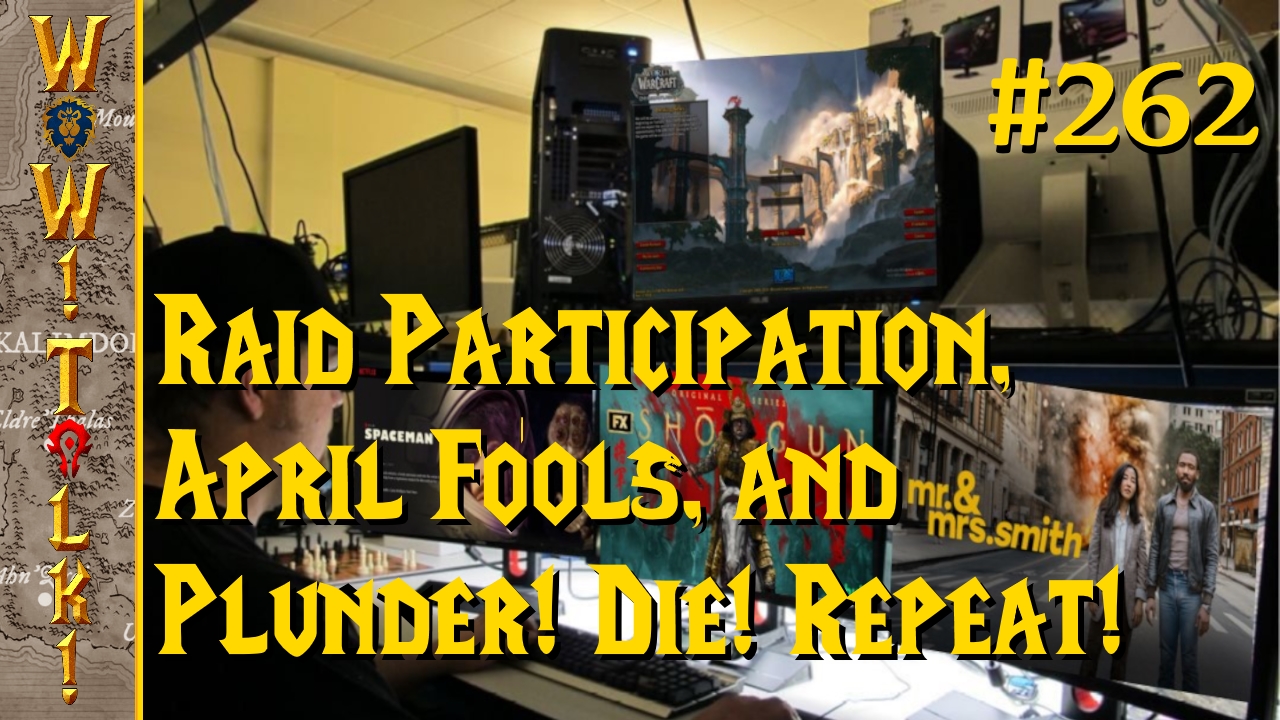
Alice in Wonderland has always held a special place for me. While most think of Disney’s animated classic of the same name when they hear it, I first think of the two books on which that movie is based: Alice’s Adventures in Wonderland and Through the Looking Glass and What Alice Found There. Both books are a mix of utter nonsense and covert logic which present themselves in the form of riddles and poems. While Alice: Madness Returns is in stark contrast to the Disney film, it does share some common ground with the books. Alice is dealing with insanity and uncertainty, and nothing really makes any sense.
Alice: Madness Returns is a direct sequel to the PC game American McGee’s Alice. In the original game, Alice’s family had been lost in a mysterious fire and she had gone a little mad. Housed in Rutledge Asylum and treated by Dr. Wilson, she is not improving very well and her only friend is a stuffed rabbit. To try and make sense of it all, she immerses herself in Wonderland, which has become a little twisted since the tragic fire. Wonderland seems to be a manifestation of her own mind and the insanity she is going through has corrupted all of its inhabitants. Unfortunately, I never got a chance to play the original game (although I will be playing it at some point since it came packed in with the sequel) but I was always a fan of this version of the fantasy world.
Alice: Madness Returns continues the aforementioned story; Alice is out of the asylum and living in the city (presumably somewhere in Britain) under the care of a psychologist. Despite clearly being well enough to be released from the nut-house, her traumatic past still haunts her. In her mind, the fire that killed her parents seemed like it was more than just an accident. Although it had been determined that her black cat, Dinah (actually named “Kitty” in the books) started the fire, Alice’s mind seems to suggest otherwise. She once again returns to Wonderland to piece together this mystery and hopefully bring the truth to light.

In most ways, this game’s story is air tight and immersive. Familiar characters from the first game are present here as well as new ones. The areas of Wonderland that you get to experience are seemingly well designed and full of character. Look a bit closer, however, and you’ll see that flaws pop up everywhere. Alice: Madness Returns runs rampant with graphical inconsistencies and problems that just seem downright lazy. Environments are blocky and unattractive, and in some ways it looks like this game belongs on last generation’s consoles. The streets of Britain are filled with a lot to look at; or at least, they would be if the textures could draw you in so you could make them out. Street signs and posters depict amusing advertisements and business names that are fun to read — if you want to wait the 5 (or more) seconds for the textures to appear. The biggest graphical flaw is the time that it takes for these texture maps to appear. At one point, everything was fuzzy for minutes. It’s unheard of and is inexcusable for a game from this generation.
The gloomy, grey-washed environments of Britain are a stark contrast to the colorful depiction of Wonderland. Characters in the real world are hideous and they all run around spewing antique slang and profanity. The character faces are full of thought and design, but their faces (most importantly their mouths) do not move when they talk. Shop keepers wave their hands over and over, not changing what they do at all. Omissions such as these take away from the atmosphere that you are supposed to be engulfed in. In the real world, and in Wonderland, the land and buildings look blocky and poorly designed. Oddly, breakable items and certain accessories on structures and statues are actually a lot better rendered, which was frustrating to see.
Besides the aesthetics, there are other flaws as well. For one thing, controls are occasionally slow and glitchy. There were several instances when I would get stuck on a wall or structure and would stutter about the area until I came free. While I was struggling, my character would have a seizure and be somehow walking both backwards and forwards as her face would blink in and out of the back of her head. What? Yes, it happened exactly like that. These are the types of weird glitches you can expect to experience in this game. Perhaps the most glaring fault, though, are the invisible walls. What good is a place called Wonderland if you can not explore every inch? Obvious paths to your destination are blocked by structures you could have easily overcome, had you not encountered an invisible barrier in the way. The ability to shrink should let you crawl through a crack, a gate, a teapot, right? Nope. Alice: Madness Returns constantly tells you “no”, which makes it incredibly linear.

This is a problem because one of the biggest parts of the game is collecting stuff. You collect all sorts of items throughout the game, and missing just one can be extremely frustrating. Each chapter contains a good amount of hidden memories, snouts to pepper, radula rooms to find and conquer, and a bunch of teeth to collect. Missing one thing can often leave you out of luck, as most of the time you can not go back once you move forward with the story. Collecting memories gives you a little bit of insight into what you are trying to figure out. Peppering snouts leads you to rewards, whether by actually making them appear, or by opening a path to go through. Radula rooms are used to obtain pots of red paint in order to color the rose red, which requires four pots per chapter. These radula rooms alternate between being easy and complicated. One of them had me completing a simple riddle, while another asked me to kill 20 enemies. The quest for completion will have you wasting time away as you scour every inch of Wonderland. Unfortunately, as I have said before, invisible walls will prevent you from really exploring.
Apart from invisible walls, there are also instances where you will pass through an object completely (seemingly a glitch). Shrink sense allows you to shrink down small and go through keyholes. It also allows you to see hidden graffiti that is written all over the place. This feature reminded me a lot of the Riddler’s graffiti in Batman: Arkham Asylum. If you constantly use this feature, it will be easier to find every little thing in the game. It can tell you whether danger or enemies are near with a little stick figure drawing of the creature or a skull and crossbones. It will also tell you if a snout is near, or if a memory hides nearby, with the appropriate picture. I used this a lot, but missed out on the beginning of the first chapter because it only tells you about the shrinking aspect on the on-screen prompt and not the graffiti.
Enemies are varied and can be incredibly difficult. The “teabot” was my greatest foe and it took me a while to figure out the right combination of weapons to bring it down fast. Each enemy has a different weapon that it is weak against, and you are given a number of different weapons to choose from in the game. These include: the Vorpal blade, the hobby horse, the pepper grinder, and the teapot cannon. I found that the Vorpal blade and the pepper grinder were effective against most enemies, and were also the fastest. The hobby horse is powerful, but is also saddled with being heavier and, therefore, slower. The teapot cannon was a pain to aim, and took forever to reload. The most valuable weapon in the game, however, is the clockwork bomb. This little rabbit wind-up toy can be deployed and then remote-detonated an infinite amount of times. My favorite use for it was deploying its decoy function; if you maneuver it between you and an enemy, they will go for the bomb first. I found this extremely effective when encountering numerous powerful enemies.

The weapons can also be upgraded, which brings us to the task of collecting teeth. The more you collect, the more you can upgrade. Teeth are everywhere, and in everything breakable. The cost of upgrading increases every time you do it, so it is best to choose wisely. There are four forms of each weapon, and it is possible to upgrade most, if not all, of them completely. Alice: Madness Returns mixes traditional platforming with action and combat. Attacks flow pretty nicely, but the camera sometimes makes it hard to see what you are dealing with. Sporadically, it will zoom in and out when you are attacking and dashing, which can be a challenge. Trying to get away from enemies is easy with the ability to dash (and explode into butterflies), but sometimes you will dash off of the level. This is not always the case, which is also frustrating, as the point in which you can fall off is not defined unless you can see invisible stuff.
Thankfully, the story in Alice: Madness Returns pleasantly succeeds in making up for some of the missteps. The characters you were so familiar with — such as The Hatter and The Walrus — will be presented to you in new and interesting ways. You will often not know who is with you or against you as you come across said characters in the game. The one constant friend is the Cheshire Cat, which will appear every now and then to give you advice or just to state the obvious. It’s incredibly enjoyable watching how the story plays out, and each character is well designed as far as personality goes. The only problem I found here, is that Alice seems very bored with every little thing that happens in the game. Plot twists, deception, and other elements of the story just receive the same reaction from Alice as though she were just sitting down and having tea. I wish she would have shown a little more animation, but she never appeared anything more than stoic.
Don’t get me wrong, Alice: Madness Returns is not a bad game. It is a must play for both Alice in Wonderland fans, and those that thoroughly enjoyed the first game. The cut scenes are particularly enjoyable ,as they are done in an old fashioned illustration that is portrayed by paper doll-like figures. The illustrations could have been ripped right out of the books (but were not actually). Please be warned though, that the the enchanting nature of the story does not carry over into the graphics. From a visual perspective, Alice is buggy and far worse than just “rough around the edges”. It is a joy to play, and will keep you engaged for hours. You will feel disappointment, however, that the world of Wonderland is not all it could have been. Here’s hoping that if there is a future entry in this series, its technical aspects will be designed a bit better.




